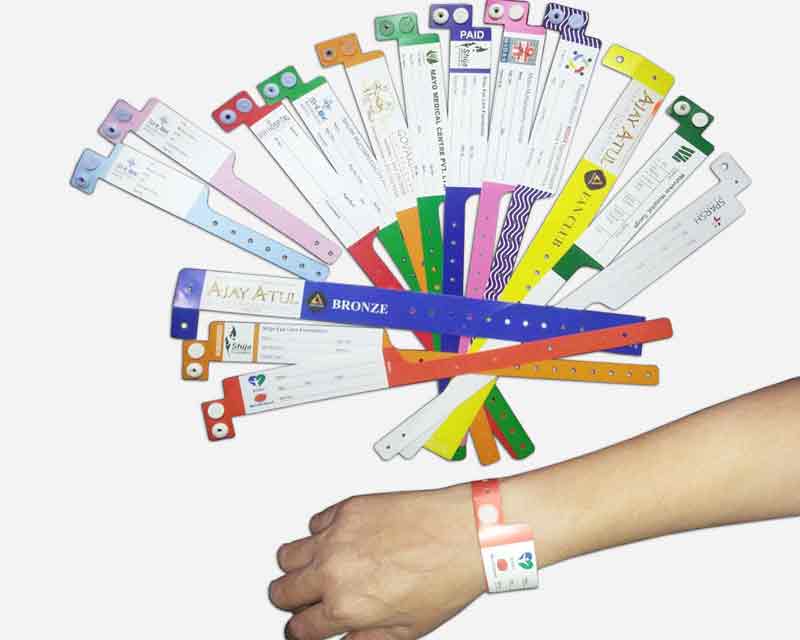The Purpose of Patient Identification Band in Improving Hospital Operations
The Purpose of Patient Identification Band in Improving Hospital Operations
Blog Article
Exactly How Patient Identification Band Plays an Essential Function in Patient Administration and Treatment
Patient Identification bands serve as an important gear in the complex equipment of health care systems, functioning as a safeguard against medical errors. As the frontline device for verifying Patient identification, these bands underpin vital processes from carrying out the right medication to guaranteeing the appropriate person goes through the designated procedure. The profound impact of such a seemingly easy tool on Patient security, experience and results could surprise numerous, leaving one to contemplate the possible innovations and innovations that might additionally enhance their efficiency.

Comprehending the Fundamentals of Patient Identification Bands
Despite the simpleness of their appearance, Patient Identification bands serve a critical function in healthcare settings. These basic wristbands, frequently constructed from plastic or paper, hold a wealth of details critical for Patient administration and treatment. They normally show the Patient's complete name, day of birth, and an unique Identification number, acting as the key source of Patient Identification. The bands might also show info such as allergic reactions or special care directions, supplying medical care experts with instant access to essential information. The use of these Identification bands is considered an universal procedure in health care, focused on making certain Patient safety and security and precision of care shipment. However, the performance of Patient Identification bands relies heavily on constant use and precise information input.
The Function of Patient Identification Bands in Minimizing Clinical Mistakes
A staggering number of clinical errors take place due to Patient misidentification, emphasizing the essential role of Patient Identification bands. These bands, usually equipped with barcodes or QR codes, consist of vital Patient info such as name, age, and clinical history. In high-stress atmospheres where medical personnel manage various responsibilities, Patient Identification bands offer as a fast and reputable referral.
Enhancing Patient Security With Identification Bands

The Influence of Patient Identification Bands on Patient Experience
Almost all patients in medical care setups experience the usage of Identification bands during their care trip. recommended you read These bands, typically used around the wrist, have a profound influence on the Patient experience. They work as a consistent, visible pointer of the Patient's identification and medical conditions, ensuring individuals that they are identified and taken care of. This basic yet vital device can considerably lower anxiousness, specifically in big hospitals where the Patient might engage with countless health care companies. These bands promote smooth transitions in between different treatment locations, ensuring smooth continuity of care. Periodic inaccuracies or pain associated with bands can negatively impact Patient fulfillment. For this reason, healthcare companies must make certain accuracy and convenience in using Identification bands.
Future Growths and Technologies in Patient Identification Bands Technology
While existing Patient Identification bands have actually confirmed effective in enhancing treatment, the perspective of technical advancements promises also higher renovations. RFID tags can give real-time Patient area monitoring, while QR codes can store extensive Patient information available by means of smart device scanning. Therefore, future developments in Patient Identification bands hold considerable capacity in changing Patient treatment.
Verdict
Patient Identification bands are an essential asset in medical care, ensuring exact Patient Identification and minimizing clinical mistakes. These devices enhance Patient security, boost self-confidence in health care systems, and enhance Patient experiences and results. With the possibility for future improvements in Identification band modern technology, their function in Patient monitoring and treatment is readied to become also more critical, reinforcing their importance in the distribution he has a good point of efficient and secure healthcare.
Exactly How Patient Identification Band Plays an Important Duty in Patient Administration and Treatment
An incredible number of clinical errors happen due to Patient misidentification, underscoring the crucial duty of Patient Identification bands. patient identification band.Undoubtedly, the use of Patient Identification bands dramatically boosts Patient safety and security in medical care settings. Thus, future technologies in Patient Identification bands hold considerable capacity in changing Patient care
Patient Identification bands are an essential possession in healthcare, making certain precise Patient Identification and minimizing clinical mistakes.
Report this page